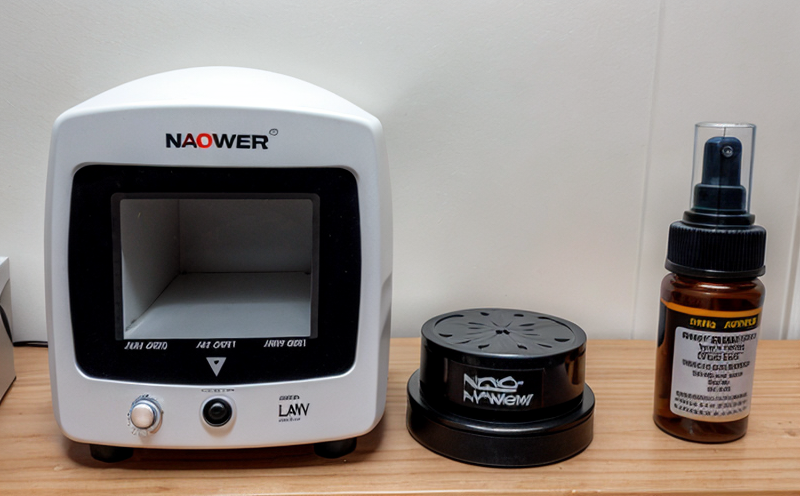ISO 20502 Scratch Resistance of Ceramic Nanopowders and Coatings
The ISO 20502 standard is a critical framework for evaluating the scratch resistance of ceramic nanopowders and coatings. This standard ensures that materials used in industries such as aerospace, automotive, and electronics meet stringent durability requirements under various environmental conditions.
Ceramic nanoparticles are increasingly employed in composite materials due to their exceptional mechanical properties, including high hardness, toughness, and chemical stability. Scratch resistance is a key factor for the performance of ceramic nanopowders and coatings, particularly in applications where surfaces experience abrasive wear or mechanical stress.
The ISO 20502 standard specifies a method to measure scratch resistance using a diamond-tipped stylus that moves across the surface at defined speeds and loads. This test provides quantitative data on how well the material resists localized deformation caused by scratching, which is crucial for predicting long-term performance in real-world conditions.
For this test, sample preparation involves dispersing the ceramic nanopowders into a matrix or applying them as coatings. The samples are then dried and polished to achieve a smooth surface finish that accurately represents their scratch resistance properties. It’s essential that the preparation process does not introduce additional stresses or defects that could affect the results.
The testing apparatus typically includes a microhardness tester equipped with a diamond indenter. This setup allows for precise control over the load and speed of the stylus, ensuring consistent and reproducible results. The scratch resistance is measured by monitoring the depth and width of scratches produced on the surface under controlled conditions.
Acceptance criteria are based on the maximum allowable depth or width of scratches allowed without compromising the integrity of the nanopowder or coating. Compliance with these standards ensures that products meet quality specifications for durability, reliability, and safety in their intended applications.
The ISO 20502 standard is particularly important in industries where material failure due to scratching can lead to significant economic losses or safety hazards. By adhering to this standard, manufacturers can ensure their products are robust enough to withstand the demands of harsh environments without compromising performance.
Understanding the scratch resistance properties of ceramic nanopowders and coatings also aids in optimizing production processes. Engineers can use the results from ISO 20502 testing to fine-tune formulations or modify processing techniques, leading to improved material properties and enhanced product longevity.
In conclusion, the ISO 20502 standard is a vital tool for quality assurance in industries reliant on ceramic nanopowders and coatings. It provides a standardized approach to evaluating scratch resistance, ensuring consistent performance across different manufacturers and applications. By leveraging this method, businesses can enhance their competitive edge by producing high-quality materials that meet international standards.
Benefits
Enhanced Product Reliability: Ensures products are robust enough to withstand harsh environments without compromising performance.
Cost Savings: By identifying and rectifying issues early in the development process, companies can avoid costly rework or product recalls.
Increased Customer Satisfaction: Providing high-quality materials that meet stringent international standards builds trust with customers.
Competitive Advantage: Compliance with ISO 20502 sets a benchmark for quality, differentiating companies from competitors in the market.
Regulatory Compliance: Adhering to international standards is essential for industries subject to strict regulations and safety requirements.
Improved Process Optimization: Testing results can guide manufacturers in refining their production processes, leading to better material properties.
In summary, ISO 20502 scratch resistance testing offers numerous benefits that are crucial for maintaining high standards of quality and reliability across various industries. It ensures products are robust enough to withstand the demands of real-world conditions while providing valuable insights into process optimization.
Quality and Reliability Assurance
The ISO 20502 standard plays a pivotal role in ensuring the quality and reliability of ceramic nanopowders and coatings. By adhering to this standard, manufacturers can demonstrate their commitment to producing high-quality products that meet international standards.
Consistent Results: The standardized method ensures consistent testing results, which are essential for quality control processes.
Predictive Performance: Scratch resistance data provides insights into the expected performance of materials under real-world conditions, allowing manufacturers to make informed decisions about product design and development.
Regulatory Compliance: Adhering to ISO 20502 helps companies comply with local regulations and industry standards, reducing the risk of non-compliance penalties.
Enhanced Reputation: Achieving compliance with this standard enhances a company’s reputation as a leader in quality and reliability within its sector.
Incorporating ISO 20502 into a company's quality assurance program demonstrates a commitment to excellence, which is increasingly important in today's competitive market. This standard not only ensures that products meet stringent performance criteria but also provides valuable data for continuous improvement and process optimization.
Competitive Advantage and Market Impact
The ISO 20502 scratch resistance test is a key factor in establishing a competitive edge in the market. By ensuring that products meet or exceed international standards, companies can differentiate themselves from competitors who may not adhere to such rigorous testing protocols.
Compliance with ISO 20502 provides several strategic advantages:
Market Differentiation: High-quality materials that meet stringent performance criteria are more attractive to customers seeking reliable products.
Innovation Leadership: Adhering to international standards encourages innovation and the development of cutting-edge technologies, positioning companies as leaders in their field.
Customer Trust: Demonstrating a commitment to quality through compliance with ISO 20502 fosters trust among customers, which is essential for long-term relationships.
Regulatory Compliance: Meeting international standards helps companies navigate regulatory landscapes more effectively, reducing the risk of non-compliance penalties and legal issues.
The impact of ISO 20502 compliance extends beyond individual products. It contributes to a company's overall reputation for quality and reliability, which can significantly influence market perception and customer loyalty. In an increasingly competitive global market, adherence to international standards is becoming essential for success.





